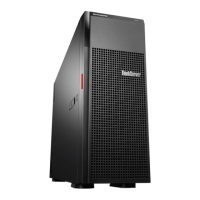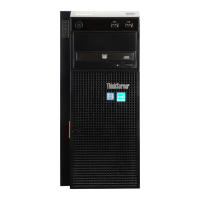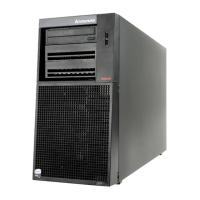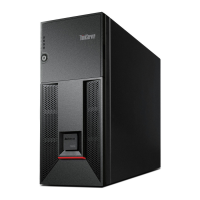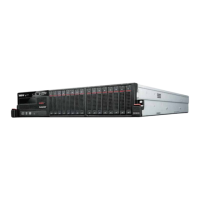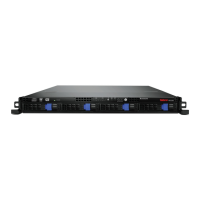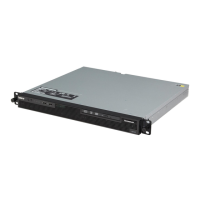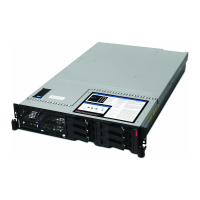3. Depending on the configuration, do one of the following:
• If the server configuration is set as onboard RAID, in the welcome window, select Installation and
press F6. Then, select Yes and type brokenmodules=ahci. When the Driver Updated added windows is
displayed, click OK. When the Please choose the Driver Update medium window is displayed, click
Back.
• If the server configuration is set as add-on RAID, in the welcome window, select Installation and
press Enter.
• If the operating system is installed on a SAN through an Internet Small Computer System Interface
(iSCSI) card, in the welcome window, select Installation and press F6. Then, type withiscsi=1, select
Yes, and press Enter. When the Please choose the Driver Update medium window is displayed,
select the folder where the drive is stored, and click Yes. Click Back and select the network device,
and then click OK. The Automatic configuration via DHCP window is displayed. The following steps
are based on the scenario that Yes is selected in this window.
• If the operating system is installed on a SAN through a fibre channel over Ethernet (FCoE) card, in the
welcome window, select Installation, press F6, and select Yes. When the Please choose the Driver
Update medium window is displayed, select the folder where the drive is stored, and click Yes. When
the Please choose the Driver Update medium window is displayed again, click Back.
• If the server configuration is set as AHCI or IDE, in the welcome window, select Installation and press
Enter.
4. Configure the language, read the license terms, and select I Agree to the License Terms. Then, click
Next.
5. In the Media Check window, click Next.
Note: If the operating system is installed on a SAN through an iSCSI card, click Configuration ISCSI
Disks to check if the iSCSI configuration information is correct. Then, click OK go back to the Disk
Activation window and click Next.
6. In the Installation Mode window, click New Installation, and then click Next.
7. Verify your region and time zone, and then click Next.
8. In the Server Base Scenario window, select Physical Machine (also for Fully Virtualized Guests) and
then click Next.
9. When the Installation Settings window is displayed, create a drive partition as you need. The following
steps are based on the scenario that a 20 GB root partition, a 1 GB boot partition, and a 1 GB swap
partition are created.
Notes:
• If the operating system is installed on a SAN, ensure that you select the drive on the SAN in the
following steps.
• Ensure that the boot partition uses the first 1 TB drive partition.
• To create a drive partition, do the following:
a. Click Partitioning and select Custom Partitioning (for experts). Click Next.
b. In the Expert Partitioner window, select Hard Disks ➙ sda in the System view area, and then
click Add.
c. In the New Partition Type window, select Primary Partition and click Next.
d. In the New Partition Size window, select Custom Size and type 20GB in the Size area, and then
click Next.
e. In the Format partition area, select Ext3 from the File System drop-down list box.
f. In the Mounting partition area, select the forward slash (/) from the Mount Point drop-down list
box. Then, click Finish. The root partition is created.
Chapter 2. Installing an operating system in legacy mode 25

